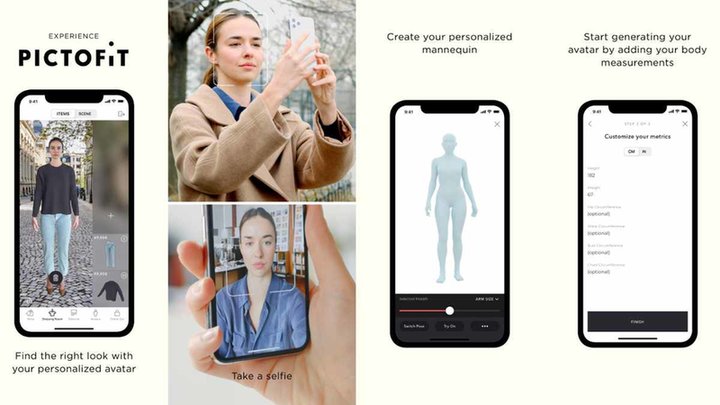
The Way Forward: Virtual Dressing Rooms
As we look back at 2022, it is clear that the apparel and fashion industry has gone through a major change in the last year. Virtual try-on technologies, both online and in-store, have made a big impact on the way consumers are shopping and they are seeking more. This is, in part, due to the pandemic accelerating the rate at which consumers needed sophisticated online tools to do shopping, as well as a shift in attitude, where shoppers actively seek personalization on every level.
In the last year alone, big retailers like Walmart, Hugo Boss, and Zalando have all launched virtual dressing rooms for customers to use online, enabling shoppers to customize looks, try on clothing via personalized avatars that are accurate to body size and measurement, and only buy what looks good on them - all without having to leave home. As a result, many other brands are trying to catch up. Retailers with physical stores are seeking to bridge the gap between online and offline with seamless shopping experiences. The transition from traditional, in-person shopping to a world where online offers just as much, if not more, than physical is speeding up at a dramatic rate.
Last year, big brands like Balenciaga, Dior, Louboutin, and Gucci all launched entirely digital collections for the first time in their over 100-year existence, proving that with the right 3D capture technology, such as PICTOFiT, heritage brands can leap into the future of fashion at the click of a button.
We see physical and digital fashion not as opponents but as two very different entities that work in harmony, improving engagement with fashion for consumers and boosting sales for retailers.
According to the latest McKinsey State of Fashion report, 30% of fashion executives see going digital as the biggest opportunity of the decade for their brands. The metaverse, and related technologies such as AR/VR, are enabling retailers to strengthen their brands & increase consumer loyalty. Consumers are now able to walk side by on the runway with their personalized avatar models. This also means that when choosing fashion items, consumers have more flexibility, free of outdated gender norms, to experiment with clothing and express themselves in new ways. As a result, we are increasingly seeing fashion labels and apparel pushing the boundaries.
We see physical and digital fashion not as opponents but as two very different entities that work in harmony, improving engagement with fashion for consumers and boosting sales for retailers. In 2023, more brands are going to leap into the digital fashion space by adding virtual try-on technology to their online and physical stores, as well as investing in experience technology that connects shoppers to the physical environment via magic mirrors. By being available not only online but also in-store, the retail journey is carried with you in your pocket from the website to the storefront and beyond.
Fashion and apparel are being reinvented and it is all thanks to technology.





Stefan is CEO and founder of Reactive Reality, the market leader in virtual fashion try-on solutions. He has over 13 years of experience in Augmented Reality and holds a PhD in the field. He has been working as a researcher at Graz University of Technology and Intel before founding Reactive Reality. Since its foundation, the company has signed up customers like H&M, Shopify, Yoox Net-a-Porter and Hugo Boss. Fashion will also play a crucial role in the Metaverse transition. Stefan gave speeches at numerous conferences and is regularly interviewed by publications such as Forbes, GQ, A1 Retail, and many more.